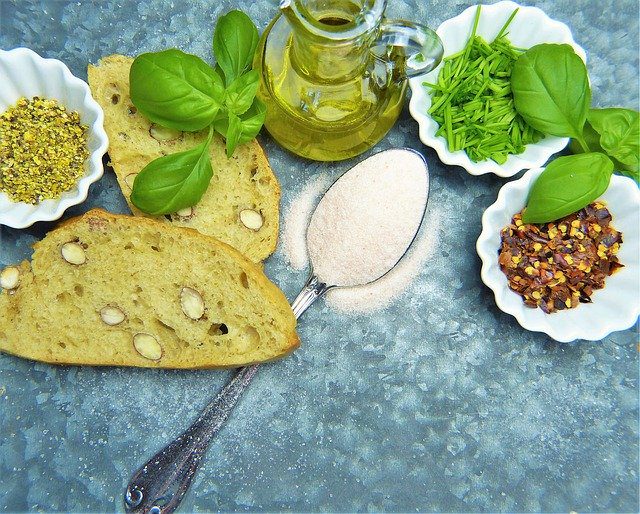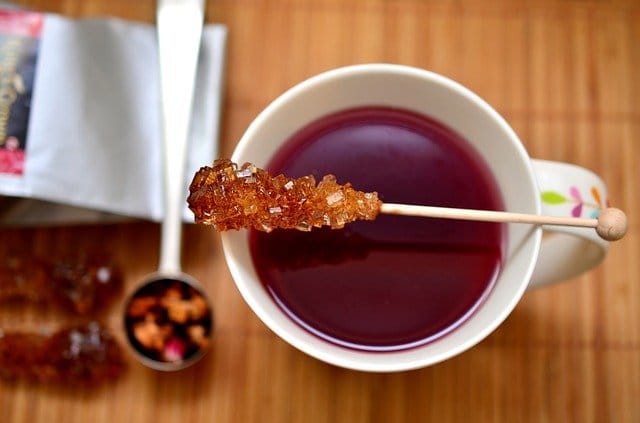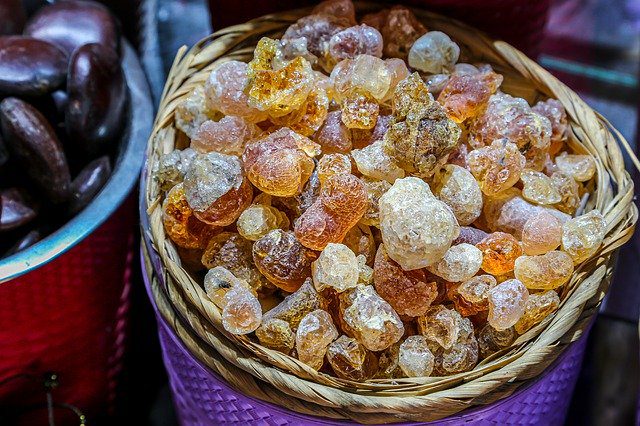Eating food gives us the strength to perform our daily tasks, which requires a lot of physical and mental energy. So to keep both our body and mind charged up to face the pressures and rigors of 21st-century living, we need to have food that is balanced in all types of nutrients, and not just high in protein and carbohydrates. But there’s always one thought lurking in the back of our heads, which makes us quite uncomfortable, and that’s the presence of food additives.
What are food additives, and what do they actually do to the quality and shelf-life of food? They surely make our food look more appetizing and add an extra layer of flavor to it, but are they harmful? Today we are going to discuss the truth behind the 7 most common food additives that you consume with your meal.
Food additives have now become a hot topic as they explode our taste buds and make us go wide-eyed with joy. But along with the growth in food technology, new food additives are also being developed to make food look and taste more tempting than ever before. That leads to the birth of mistrust and misconceptions about the food additives, such as whether there’s any need for food additives to be added? Or do they provide any benefit when they are induced in our food? Well, today we shall find out.
So, get ready to read an article that is both delicious and informative at the same time.
Table of Contents
What Are Food Additives?

First, before we go any further, we need to be clear about what are additives in food and how they help in cooking and preserving food. Any substance which is used to preserve, conserve, or enhance the flavor of food, taste, appearances, and other qualities, when added to your food, is a food additive. Back when there were no restaurants and bars, men and women used to eat not for the pleasure of having something to tingle their taste buds, but to survive. Then, food used to be prepared just before eating and would be consumed almost immediately.
Some of the most common examples of food additives being used in everyday lives are pickles. Picking is one of the most ancient ways of preserving vegetables and meats, and back in the day when there were no refrigerators or freezers, pickling allowed for foods to be kept for a longer period of time. Salt and sugar are natural preservatives and were amongst the first food additives, you could say.
But as the industrial revolution happened and we moved into the 21st-century, food scientists discovered many new food preservatives. Both natural and artificial food additives are made in labs by food scientists.
Artificial Additives In Food
These are produced in labs, and most of your package food companies use them to preserve the taste and the color of the packaged food. They may not necessarily be harmful to health and are added to extend the life of important food factors such as flavor, texture.
Packaged food and ready-to-eat food may contain high amounts of artificial food additives. Thus, there is even a bigger market for artificial food additives than natural ones. So read your nutrition labels well!
Natural Additives In Food
On the other hand, we have natural additives such as salt, honey, sugar, and herbs, which work in the same way. The additives present in nature were used to preserve food back in the early days of mankind. However, today also you will see several homemakers also using them as an organic alternative. Using oil as a preservative in pickles and sugar in homemade jams and fruit spreads are examples of natural preservatives.
Effects Of Food Additives On Human Body

Now let’s talk about the most important question we have regarding food preservatives. How do these food additives impact our bodies upon regular consumption?
Some people might be sensitive to certain types of food additives, which can cause them hives and diarrhea, but the chances of having these issues are very slim. So, don’t put your eyes of suspicion on every other packaged food you see in grocery stores. Most of these additives are present in your food and are written on the container to give you a better idea of what kind of additives you are consuming.
So, if you are prone to allergies and infections, then you need to be careful by reading the ingredients label first.
World Health Organisation’s Take On Food Additives

The World Health Organisation worked together with the Food and Agriculture Organisation of the United Nations for the assessment of the potential risk of food additives when consumed by humans. The assessment was done independently by the team of international experts, that was selected for the job by the joint committee of FAO and WHO.
Additives that were tested during the assessment were found to have no definite health risk to consumers and can be used by packaging companies to preserve the food. The JECFA assessment was based on the scientific reviews, which included all available biochemical, toxicological data on the given food preservatives. The final evaluation report consists of all long term, short-term, acute effects of food additives on animals and human subjects.
Once all the assessments are done, and results are compiled, the WHO came up with an acceptable daily intake. It determines how much additives are safe to consume by a healthy human in a single day.
All the food preservatives that are present in your packaged food were being tested under WHO’s food additive assessment, so you don’t have to worry about their adverse effects. Just like we mentioned above, you can see each of them and their quantity on the sides of your packed food, along with other data mentioned regarding the food product.
Also, you can see the FSSAI mark on the package. If the mark is there, the food is safe to eat as it stands on all the food requirements of the Food Safety and Standards Authority Of India (FSSAI).
Furthermore, if you are a person who is looking to start a new business for packaged food, and need to know what food preservatives you can use to preserve and enhance your food flavors. Go to the FSSAI government website and see the list of all 11,000 food additives which are legal to be used in India and are safe to consume.
Related Read : Here’s everything you need to know about Emulsifier 433.
7 Most Common Food Additives
Food is the basic necessity of our life, and in the same way, a food preservative is essential for food products to last longer, maintain quality and nutrition and continue to be in a perfectly edible condition upon purchase.
Here is the list of the most common food preservatives that you can find in your daily meals.
1. Monosodium Glutamate (MSG)
Starting, we have MSG, which is the most common artificial additive. In addition to this, it can be found in several processed foods, such as your frozen dinners, that include ready to eat noodles, soups, processed meat, etc. Most of your canned food, which you see on the shelves is using MSG to preserve the food present inside.
According to the Food and Drug Administration, “MSG is generally safe to eat.” On the other hand, many companies use Glutamate property, which is an amino acid to enhance the flavors of your canned food. MSG is present in the natural form within tomatoes and cheese too.
In 2020, food corporations are using the fermentation process to produce MSG for food successfully. This fermentation process is the same one that your mother uses at home, to make yogurt and Dahi.
2. Artificial Food Additives Coloring

Are you looking at something in the restaurant that looks too unreal to be true, and the colors just popping out from the dish? Then there is a sure chance you are looking at a dish that is made by using artificial food additives or coloring. There are lots of ways to make your food look beautiful, and one of the most common approaches to accomplishing this task is by using food coloring.
You might think food coloring is restrained to your kids’ candies and morning cereals. It’s not restricted to these food items. You need to read the ingredients of your packaged food items, and you will find food coloring lurking in between other ingredients too.
In the past 50 years, the consumption of dyed food has increased by 500%. Most of the junk food you found on the streets of your city use artificial coloring. Moreover, food coloring in shades of turmeric, coffee, chilly red powder, etc. all come as a natural food coloring material.
Furthermore, several medical conditions might occur in people who have a sensitive body. Thus, it’s fair to consume only a little amount of artificial food additives coloring with your food. While, most of the time, try to avoid it as it doesn’t give you any taste or nutrition benefit whatsoever.
3. Sodium Nitrate
This chemical helps in preserving your meat products from getting harmful bacteria. In addition to this, it adds a salty flavor to your meat, while giving your meat a pinkish color. Furthermore, Sodium Nitrate blocks the growth of botulism and prevents your meat from spoilage.
You can also find a higher amount of sodium nitrate in green veggies such as Spinach, which can easily contain 500 to 1900 parts per million of sodium nitrate. Only 5% of your daily intake of sodium comes from meat, and the rest of it comes from the vegetables. When the sodium nitrate, which is present in the veggies, comes in contact with your saliva, it turns into sodium nitrite, which is not known to be harmful for human consumption.
During our research, we have found out that Sodium nitrate, when it comes in contact with high heat, turns into amino acids and nitrites. That can turn into nitrosamine, which is not suitable for you to consume. It is best if you keep the levels of Sodium Nitrate medium to low in your diet.
Thus, you need to stop eating processed meat as your daily meal. Try to include freshly cut pieces of meat in your diet, as they are way more nutritious than the packed ones. Likewise, they provide a high amount of proteins and carbs to your body.
4. Artificial Sweeteners

When talking about losing weight and getting a toned body, most people will tell you it’s more to do with your daily diet than the exercise you do in the gym.
Many cola and beverage companies use artificial sweeteners to enhance the flavor of their soft drinks to make them more pleasing to young kids and teenagers. Some of the most common types of sweeteners are aspartame, sucralose, and potassium. While it is true that in moderation, artificial sweeteners can help you reduce your weight, and people who are diagnosed with diabetes may use it on occasion to maintain their blood sugar levels; the fact remains that rampant use of artificial sweeteners is not good for the health in the long run.
5. High-fructose corn syrup
Another sweetener that is widely used in sodas is corn syrup. It is used in many of your fruit drinks, that say they are made from 100 natural fruits. Well, they are not lying to you as corn sugar does occur naturally in corn.
HFCS has been linked to a variety of health issues over the years and is considered really bad. It is counted as a major reason for growing obesity in the world. It is said to be one of the most versatile food additives that are present in the market as it is used across a variety of food products.
6. Trans Fat

Trans fat is another additive that is present in both synthetic and natural forms. Trans fat is a kind of unsaturated fat that is present in the meat and dairy products that are produced by ruminant animals. Some of these animals include cattle, sheep, and goats. Trans fat occurs naturally in their stomach when they eat and digest grass.
The trans fat available in dairy products is a mere 2-6% of the total fat. On the other hand, speaking of trans fat quantity in cuts of beef and lamb you will find it near around 3-9%.
Moreover, you can find vegetable oils that have gone through chemical processing to remain liquid at room temperature. Lastly, trans fat also increases the shelf life of vegetable oils.
Avoid foods with trans fat as it is not good for health.
7. Sodium Benzoate
Just Like Sodium Nitrate, Sodium Benzoate is also used in packaging meat-related food items. It helps in the prevention of your meat products from getting attacked by fungi that could quickly spoil your food and make you feel sick once you eat it.
Sodium gets inside each of the cells that are present in your diet and helps in balancing its pH value. Thus, increasing the acidity of your food, making the intracellular pH lower, of your diet, Sodium Benzoate creates an environment that doesn’t allow fungi to grow and spread inside of it.
Many soft drinks come with a high amount of Sodium Benzoate as it enhances the flavors of your soft drink. If you look at the ratio of the ingredients of your soft drink on its cover, you will see Sodium Benzoate be present in E211. That’s the number assigned to it as a food chemical or as an additive.
Also, the pickles bought from your local grocery store all of them contain Sodium Benzoate in one form or the other. Any of the food products present in your diet, which contains vinegar, may also have this chemical.
Quick Read :
Humectant 451 – Types, Uses, And Features.
Food Additive Controversy
Like any other science, food science with time evolves, and discoveries will come from the research done. People speculate food preservatives are the sole reason for the food to be not healthy for eating. Well, that’s not the case at all. If the food is not good to eat, it means there are other factors, too, not just the presence of food preservatives. On the other hand, as we have already said these 7 most common food preservatives help in a lot of ways in keeping your food preserved and increasing the shelf life.
Excessive consumption of anything is inadequate, as a result, if you are incorporating meals in your daily diet that have lots of food additives, and it doesn’t matter in which form they are present, it is going to hurt your health just like overeating sugar, and salt hurts to your body.
How Healthy Food Additives Really Are?

Now we have cleared your doubt about the harmful effects. Let’s talk about the bright side of food preservatives.
First, when you add preservatives such as Sodium Benzoate and Sodium Nitrate, it preserves your food and helps you to store it for a longer time.
Secondly, with their help, food-wastage can be reduced, and consumers now have the choice of several ‘travel-friendly’ snacks that don’t spoil as soon as you leave home.
Moreover, food preservatives are cheaper than preserving your food in some other way, as they are widely available. Makes your loaves of bread last longer and help bakers too.
Furthermore, they make sure no bacteria and fungi spread in your food while it is still packed in the can. Thus, it saves you food as well as keeps you from being sick.
Lastly, they could be a great alternative to your natural sugar and salt, as a result, you can use these additives to reduce your weight and make your blood sugar stable.
Misconception About Food Additives That Cause Cancer
A common misconception that is now being spread like wildfire is that these additives can cause the growth of cancer cells in your body. Well, we are happy to break this bubble of myth.
As the research stands now, there is no evidence whatsoever, which could be said to be a piece of actual evidence and can back this notion. There are other ways in which food additives, when taken in large quantities, can be harmful to your health. For example, if you are allergic to annatto, which is a natural coloring food additive present naturally. That helps in giving your food the yellow color. It can give you hives.
Likewise, MSG, when taken in a high amount, can lead you to headaches, nausea, and weakness. All these medical conditions are the same if you take too much natural sugar in your meals.
When some of them have a complex name, people get confused and think these additives were made in labs. But it’s not correct. Many of these additives are present to us in a natural form, and we can extract them from vegetables and fruits.
Take a look at some of the additives that are present naturally in Apple, Apple which your doctor recommends you to eat daily. Acetaldehyde, ethanol, ethyl pentanoate, and ethyl-2-methyl butanoate.
Frequently Asked Questions
Here are some interesting FAQs on food additives :
1. What are 10 names of common food additives found in our foods?
Here’s the list of the ten common food additives found in foods :
1. Sodium Nitrite
2. Monosodium Glutamate (MSG)
3. High-Fructose Corn Syrup
4. Carrageenan
5. Sodium Benzoate
6. Xanthan Gum
7. Yeast Extract
8. Ascorbic acid
9. Citric Acid
10. Natural Flavors
2. Are food additives mostly to be avoided?
There are some food additives that have certain side effects on the body. While plenty of the other food additives are considered safe for consumption.
3. What are food additives and what are they mostly used for?
As the name suggests food additives are substances that are added to food. The primary reasons for this is to enhance the freshness, improve the texture and the overall appearance. These are typically added during the processing and making of the food.
4. What are the common food additives used to avoid spoilage of food?
Sodium benzoate, calcium propionate, and potassium sorbate are the three common food additives used to avoid the spoilage of food.
5. Why are food additives added to food?
The aim of food additives is to maintain the freshness, enhance the color, flavor and texture of food.
Conclusion
Now you know the truth about 7 most common food additives, and you how they are not harmful to your health if consumed properly. On the other hand, with this article, you get a better idea of how they help you in different ways, and why they are so crucial to the food industry, packaging, and food delivery services.


